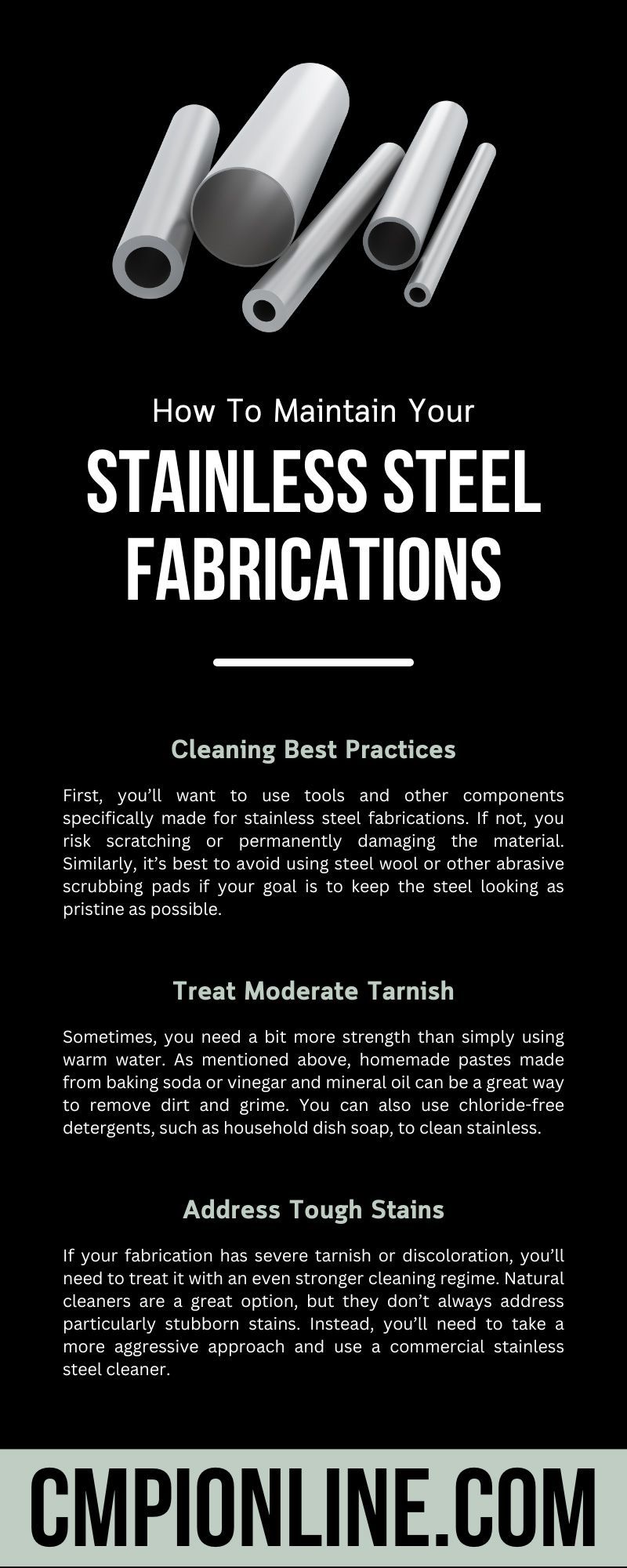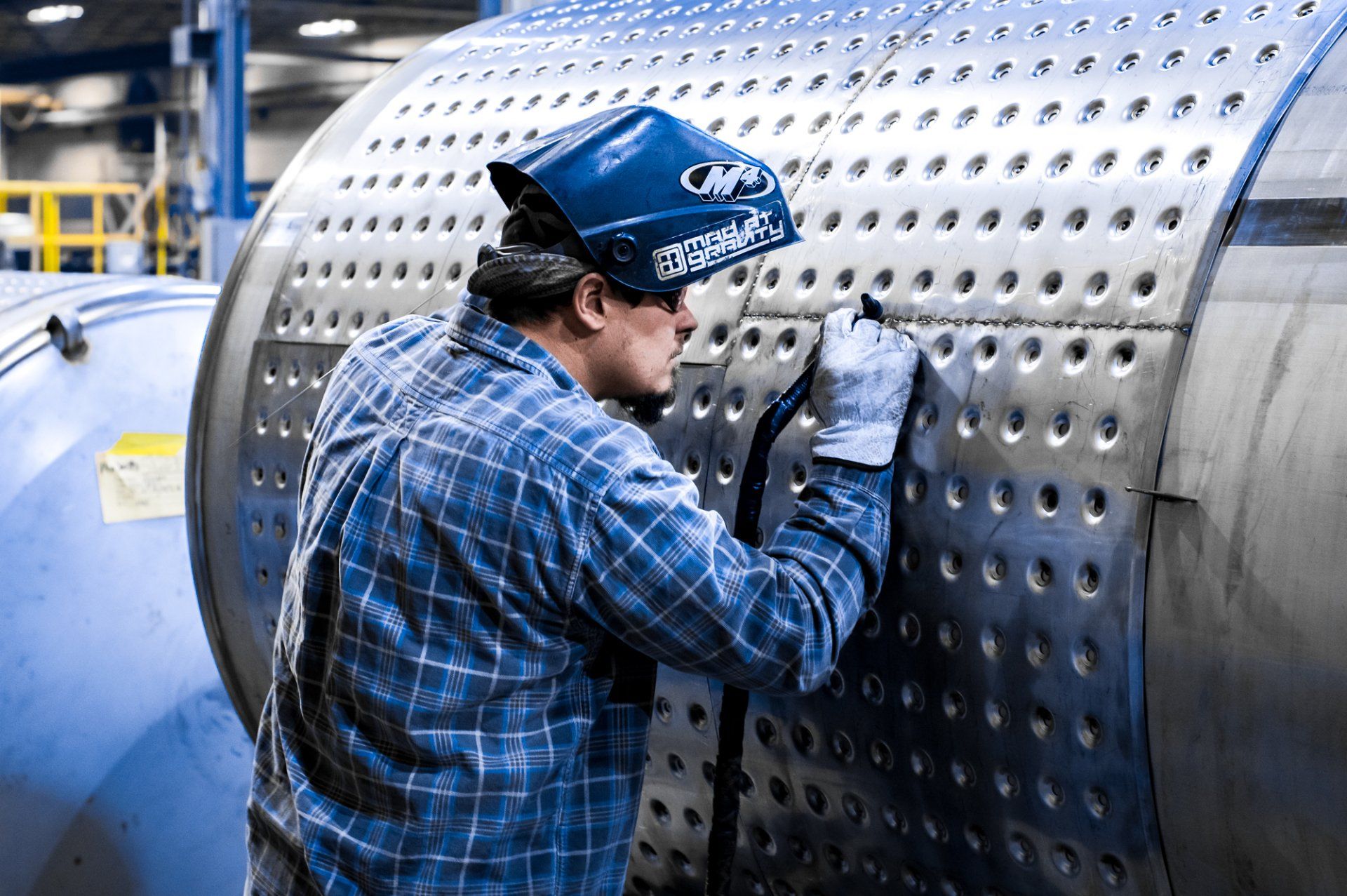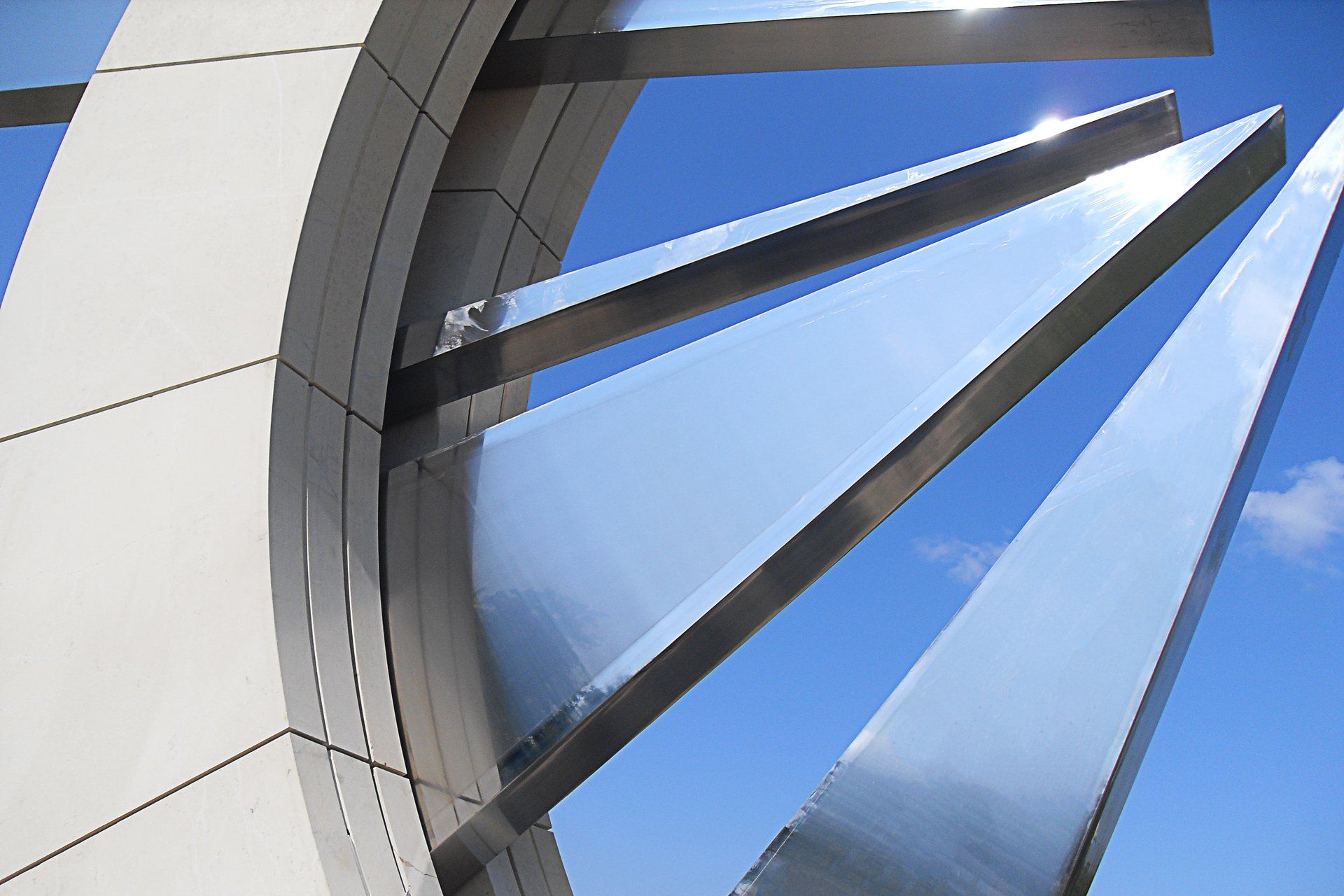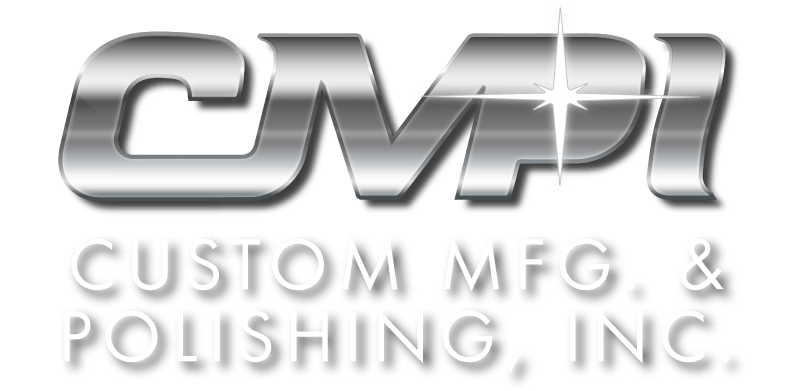How To Maintain Your Stainless Steel Fabrications
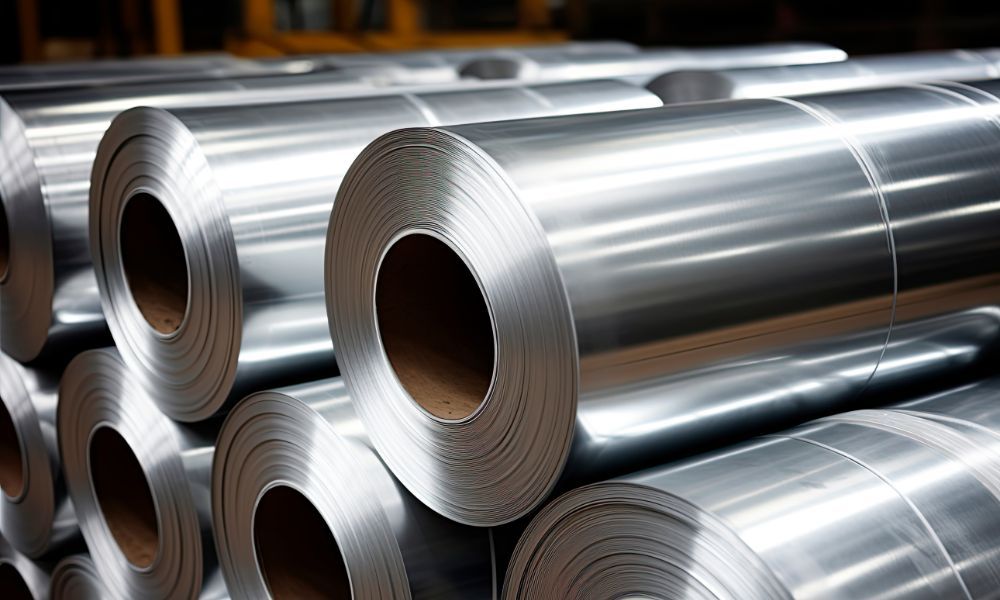
Stainless steel is a durable, versatile material for custom metal fabrication. When you want a shiny, waterproof, and strong finish, stainless steel is a great option. From appliances and handrails to bollards, there are so many uses for this high gloss material.
However, stainless steel does not always remain clean or rust-free. If users implement stainless steel outdoors or in an environment where food, chemicals, or pharmaceuticals are present, it can easily become dirty over time. Continue reading to learn how to maintain your stainless steel fabrications so that you can enjoy the material for years to come.
Causes of Stainless Steel Corrosion
Before we dive into how to maintain the material, it’s important to understand some common causes of stainless steel corrosion. In general, when stainless steel encounters specific chlorides or acids, these substances can wear down the material over time.
Chlorides, sulfuric acids, and hydrochloric acids are particularly dangerous in terms of corrosion. Additionally, iron or carbon steel can harm stainless steel. Even high temperatures can impact the performance of stainless, so be sure to maintain a comfortable temperature in all manufacturing spaces.
It’s important to keep in mind that there are over 150 grades of stainless steel. Thus, some grades will be more prone to corrosion than others. Additionally, certain external factors will negatively impact some grades more than others. You’ll need to know what grade of stainless steel you’re working with to fully understand how to properly clean and maintain it.
Cleaning Best Practices
There are a handful of cleaning best practices to keep in mind if you want to maximize the life of your stainless steel fabrication. First, you’ll want to use tools and other components specifically made for stainless steel fabrications. If not, you risk scratching or permanently damaging the material. Similarly, it’s best to avoid using steel wool or other abrasive scrubbing pads if your goal is to keep the steel looking as pristine as possible.
You should also wear clean gloves when cleaning stainless steel to avoid contamination. To maintain the integrity of the steel, be sure to avoid any contact with chloride solutions such as bleach or disinfectants. Finally, if the stainless steel accidentally comes into contact with a contaminant, you’ll want to clean it as soon as possible to avoid corrosion or further damage.
Routine Cleaning Tips
Luckily, routine cleaning of your stainless steel fabrications is a straightforward process. The easiest method is with a soft microfiber cloth and warm water. As mentioned above, you want to avoid any abrasive materials or harsh chemicals, as they can cause permanent damage. If the fabrication is not tarnished or overly stained, you should be able to make it sparkle by simply buffing it in circular motions with moderate pressure. If you’re working with a larger application that you can’t clean by hand, such as sheet metal, consider using a power washer or hose to spray it with warm water.
If you need to clean a stainless steel appliance, you can do so without chemicals. Use baking soda to make a paste with water and gently rub it on the surface of your appliance. You can also use vinegar mixed with mineral oil. To keep your stainless steel in the best condition, you should always apply cleaning solutions in the direction of the grain.
Treat Moderate Tarnish
Knowing how to maintain your stainless steel fabrications with moderate tarnish is also important. Sometimes, you need a bit more strength than simply using warm water. As mentioned above, homemade pastes made from baking soda or vinegar and mineral oil can be a great way to remove dirt and grime. You can also use chloride-free detergents, such as household dish soap, to clean stainless.
No matter what cleaning agent you decide to use, it’s critical to rinse your fabrication as thoroughly as possible. Leftover residue can cause damage to stainless steel. You also don’t want to soak stainless components in water because long-term exposure can harm the durability of the steel.
Address Tough Stains
If your fabrication has severe tarnish or discoloration, you’ll need to treat it with an even stronger cleaning regime. Natural cleaners are a great option, but they don’t always address particularly stubborn stains. Instead, you’ll need to take a more aggressive approach and use a commercial stainless steel cleaner.
Most commercial cleaners can remove various types of tarnish. However, it’s a good idea to spot-test the cleaner in an inconspicuous area before liberally applying it to your fabrication. You should also follow the instructions closely to avoid any undesirable mishaps.
Sometimes, stainless steel interacts with grease and oil and leaves behind unwanted residue. In that case, it’s best to reach for an alkaline-based cleaner. Alkaline-based cleaners contain a chemical agent designed to remove tough residues from stainless steel.
Stainless Steel Polishing
Another important step in terms of stainless steel maintenance is polishing. If your fabrications have formed a dull cast over time, you can restore a shimmering, high-gloss look with proper polishing techniques.
You can polish most stainless steel fabrications in three simple steps. First, you’ll want to clean and prep the area. Next, you’ll need to buff the stainless steel. Lastly, you’ll polish the steel. If your fabrication is too large to polish by hand, there are companies that have the equipment needed to keep your stainless looking shiny and new.
Maintenance Guidelines
With proper precaution, you can keep your stainless steel applications and parts looking as good as new. For instance, if you’re grinding or welding iron-based metals near stainless steel, it will cause the stainless steel to oxidize. The oxidization can lead to rust or corrosion, so it’s important to keep different materials separate during the fabrication process.
In addition to routine care and cleaning, it’s a good idea to prevent your steel parts from being exposed to potentially harmful external factors. Mechanical damage, adverse environmental conditions, and harsh chemical solutions can all wreak havoc on stainless steel. As such, you want to be careful in terms of where and how you handle your steel fabrications.
At CMPI, we provide custom stainless steel fabrication for a wide range of industries. Whether it’s welding, rolling, shear and brake press, or waterjet, we can help you process and fabricate items to your exact specifications. Our stainless, carbon, aluminum, and alloy material fabrications serve businesses across the country.
Whether you need custom bollards or a hand and guardrail system, we’re here to help. We also offer ornamental installations and custom metal signs and logos. Get in touch today to learn how we can help you complete your project with ease.
